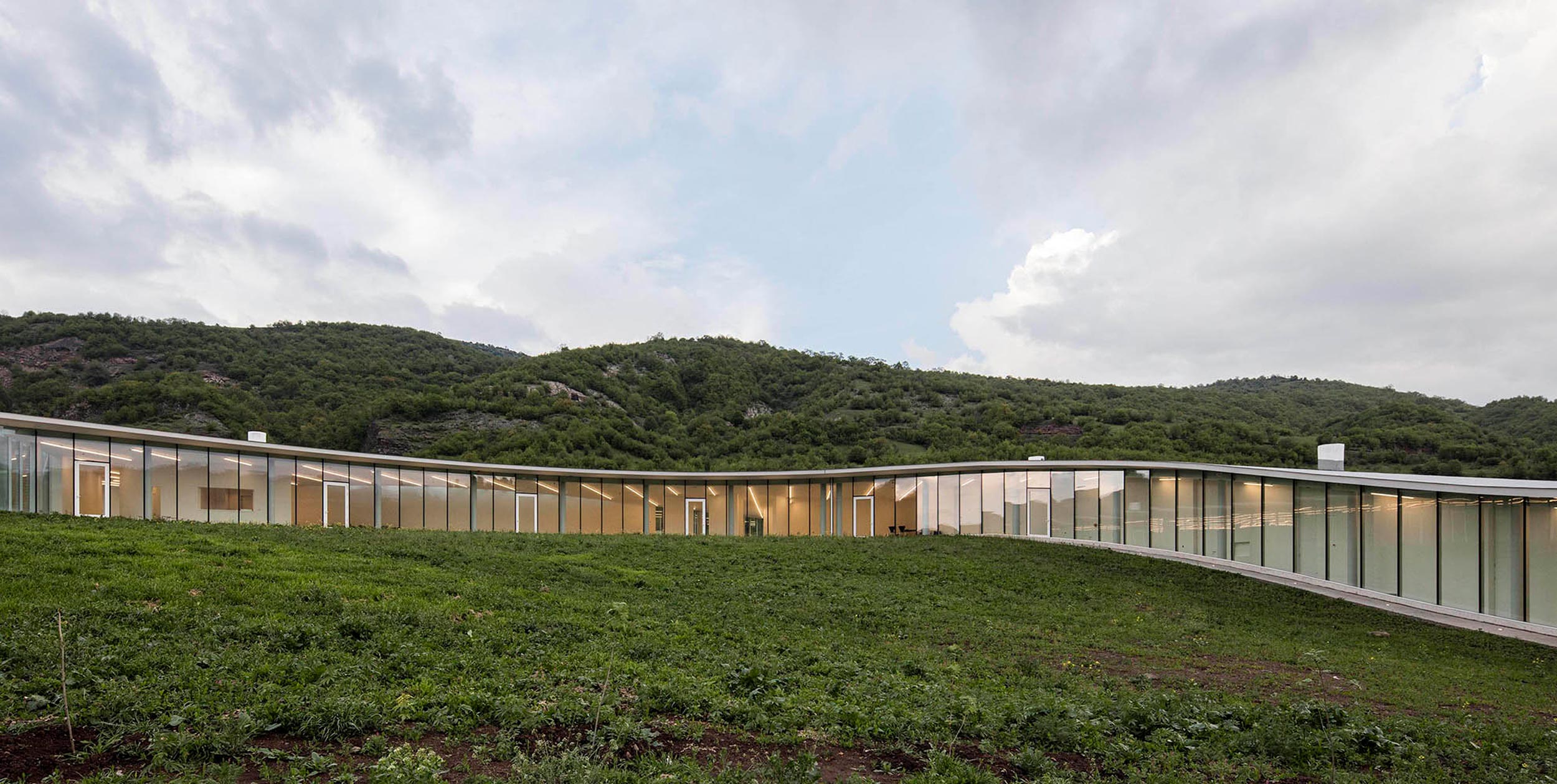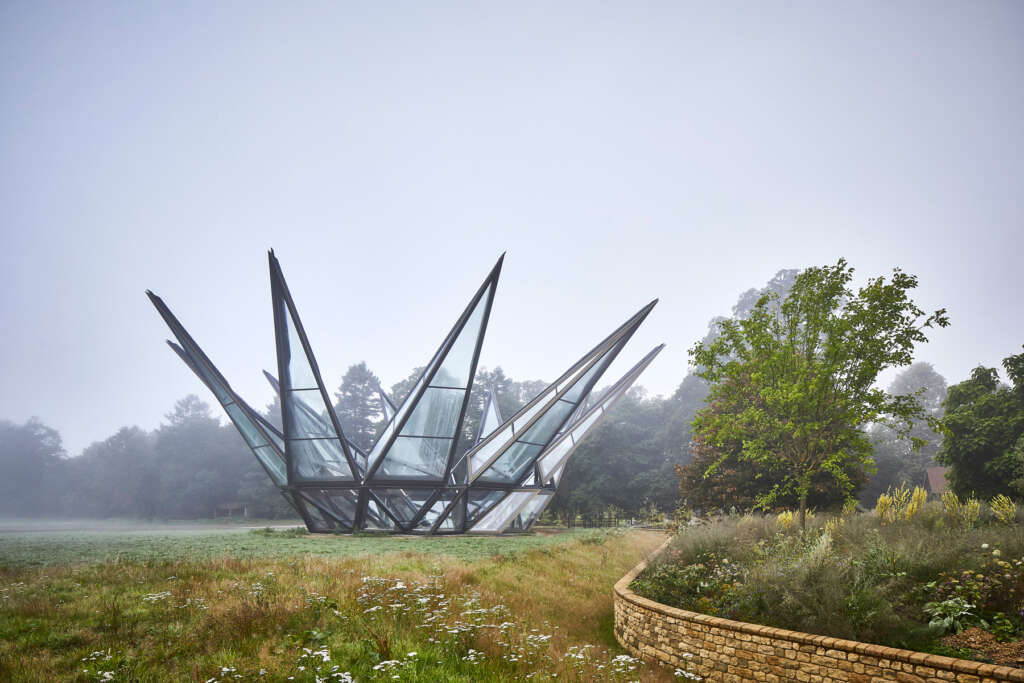
Glasshouse for Woolbeding Gardens
Architect: Heatherwick Studio
Location: Woolbeding Gardens, West Sussex
Type: Greenhouse
Year: 2022
Photographs: Hufton+Crow, Raquel Diniz Heatherwick Studio
The following description is courtesy of the architects. Heatherwick Studio has unveiled its latest project, a kinetic Glasshouse set on the edge of the National Trust’s Woolbeding Gardens, part of an historic estate in West Sussex.
This unfolding structure provides the focal point to a new garden that reveals how much the ancient Silk Route has influenced English gardens of today. It features ten steel ‘sepals’ with a glass and aluminium
façade, which take four minutes to open, creating an immense 141m2 space in the shape of a crown.
Conceived in collaboration with The Woolbeding Charity and the National Trust, the Glasshouse draws
inspiration from the spirit of Victorian ornamental terrariums. It deploys cutting-edge engineering to provide a functional protective structure while at the same time offering a beguiling, decorative element to
the new Silk Route Garden.
On warm days, the Glasshouse opens its ‘sepals’ using a hydraulic mechanism to allow the plants access to sunshine and ventilation while in colder weather the structure remains closed providing shelter to a collection of subtropical species.
Thomas Heatherwick said: “This is a place and a project that literally unfolds. You step through this bewitchingly beautiful garden and discover an object that starts like a jewel and ends like a crown, as the Glasshouse slowly unfurls.”
“I think it also speaks of our need to keep creating amazing pasts. Weaving contemporary invention into the fabric of historic settings and having the confidence to let each one speak to the other.”
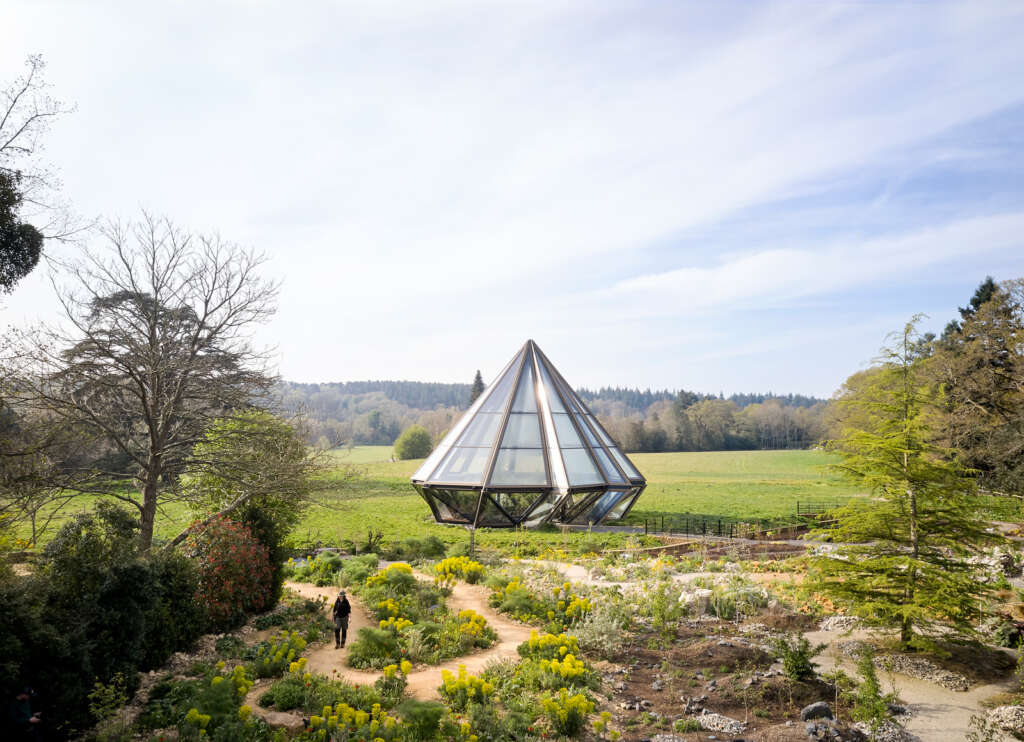
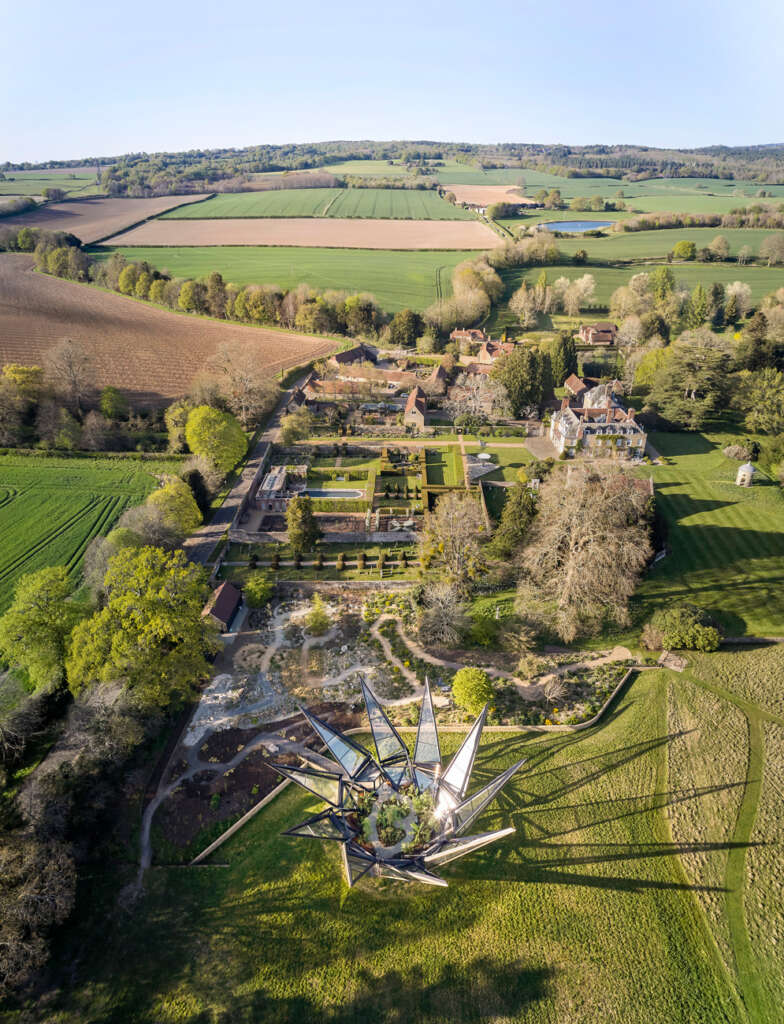
The Silk Route Garden surrounding the Glasshouse invites visitors on a 12-step journey through a landscape influenced by the ancient trading route between Asia and Europe where commodities such as the eponymous silk were exchanged and along which many plants species were brought back to Britain for the first time, such as rosemary, lavender and fennel.
A winding path allows visitors to move through over 300 species and twelve distinct regions of the Silk Road. From Mediterranean evergreens where visitors can enjoy a rare variety of Mullein (Verbascum sp.) grown from a seed brought here by a friend of Woolbeding Gardens, through to the richly scented Gallica roses, now so popular in England but originally introduced to Europe by traders from Persia.
The Glasshouse itself shelters an impressive, rare specimen of an Aralia Vietnamensis which provides shade for a collection of tender ferns growing alongside umbrella trees, magnolias and bananas.
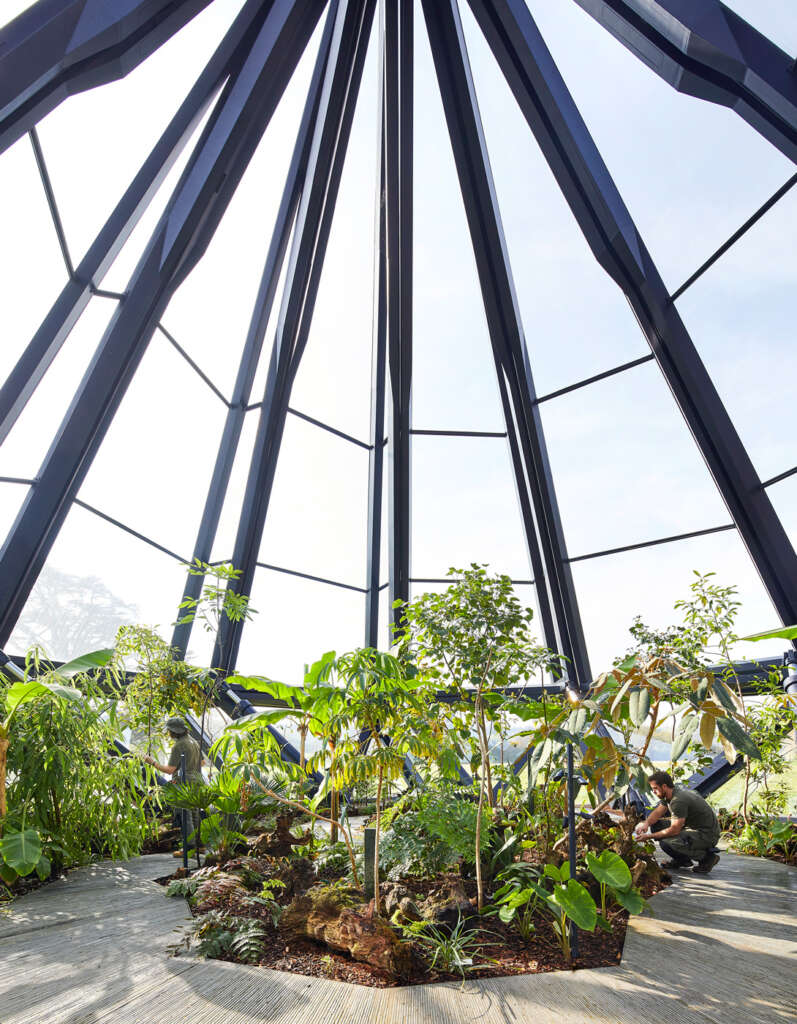
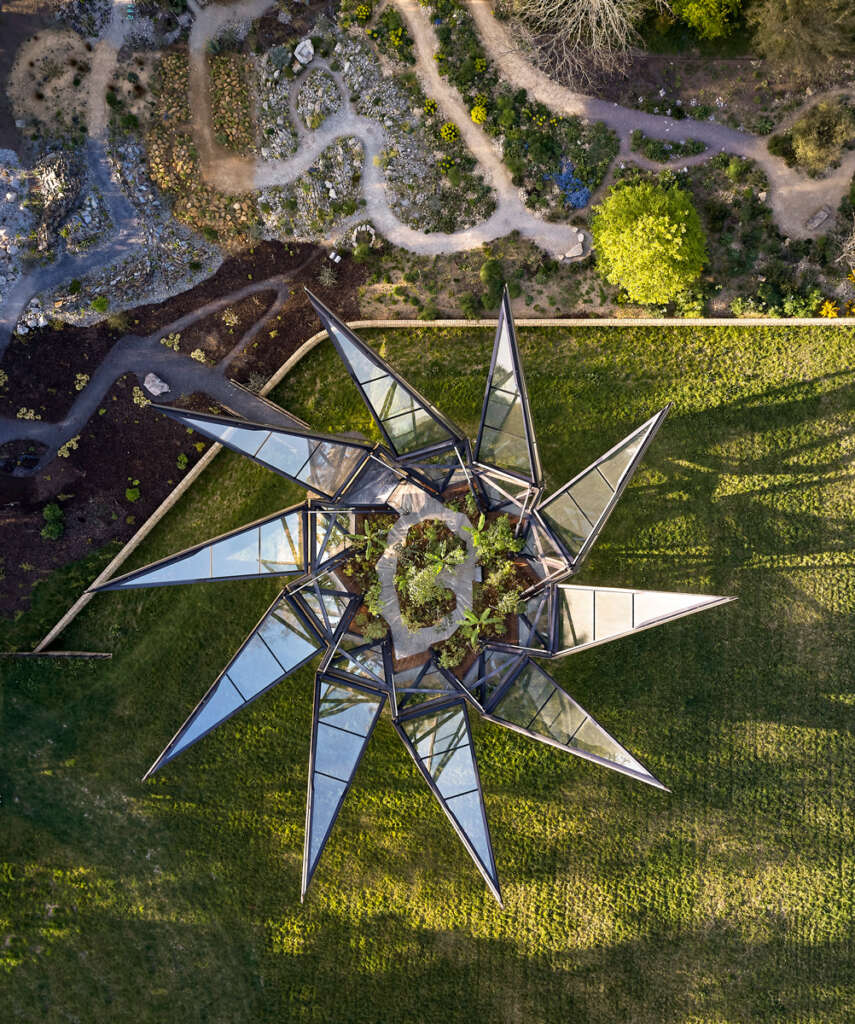
“This Heatherwick Glasshouse represents the cutting edge of technical design and engineering but it’s also a restoration of something that is part of Woolbeding’s history,” says Mark Woodruff of The Woolbeding Charity.
“It stands as a crowning achievement in contemporary design, to house the flora of subtropical south-west China at the end of a path retracing the steps along the Silk Route, from temperate Europe and across mountains, arid lands and high pastures that brought the plants from their native habitat in Asia to come to define much of the richness and glory of gardening in England.
“Joining the William Pye water sculpture and Philip Jebb’s noble neo-classical folly, both monuments to the fallen great trees that they succeeded, the Heatherwick Glasshouse and new Silk Route Garden imbue Woolbeding with even more delight, beauty and pleasure for all who come to what Disraeli called ‘the loveliest valley in the land’.”
Andy Jasper, Head of Gardens and Parks for the National Trust adds: “The gardens and parklands of the National Trust are as much about the future as they are about the past. The amazing Heatherwick Glasshouse in the new Silk Route Garden is a fantastic example of this – a wonderful reminder of the historic horticultural legacy we are all so connected to in our gardens today, and simultaneously providing a symbolic reminder of our commitment to and belief in tomorrow.
“The Woolbeding project has been an incredible example of technical and horticultural design brilliance. It’s been fantastic working with Heatherwick Studio, with Stewart Grimshaw and the whole project team, and it’s been an inspiring journey that we hope will equally inspire our visitors.
It is a chance not only to discover the many stories of owners, gardeners and designers who left their mark,
but also experience the excitement and wonder of new designs and ideas.”
Visiting the Woolbeding Glasshouse and Silk Route Garden The Woolbeding Glasshouse and the Silk Route Garden are open on Thursdays and Fridays from 28 April to 30 September. Visit the National Trust website for more information.
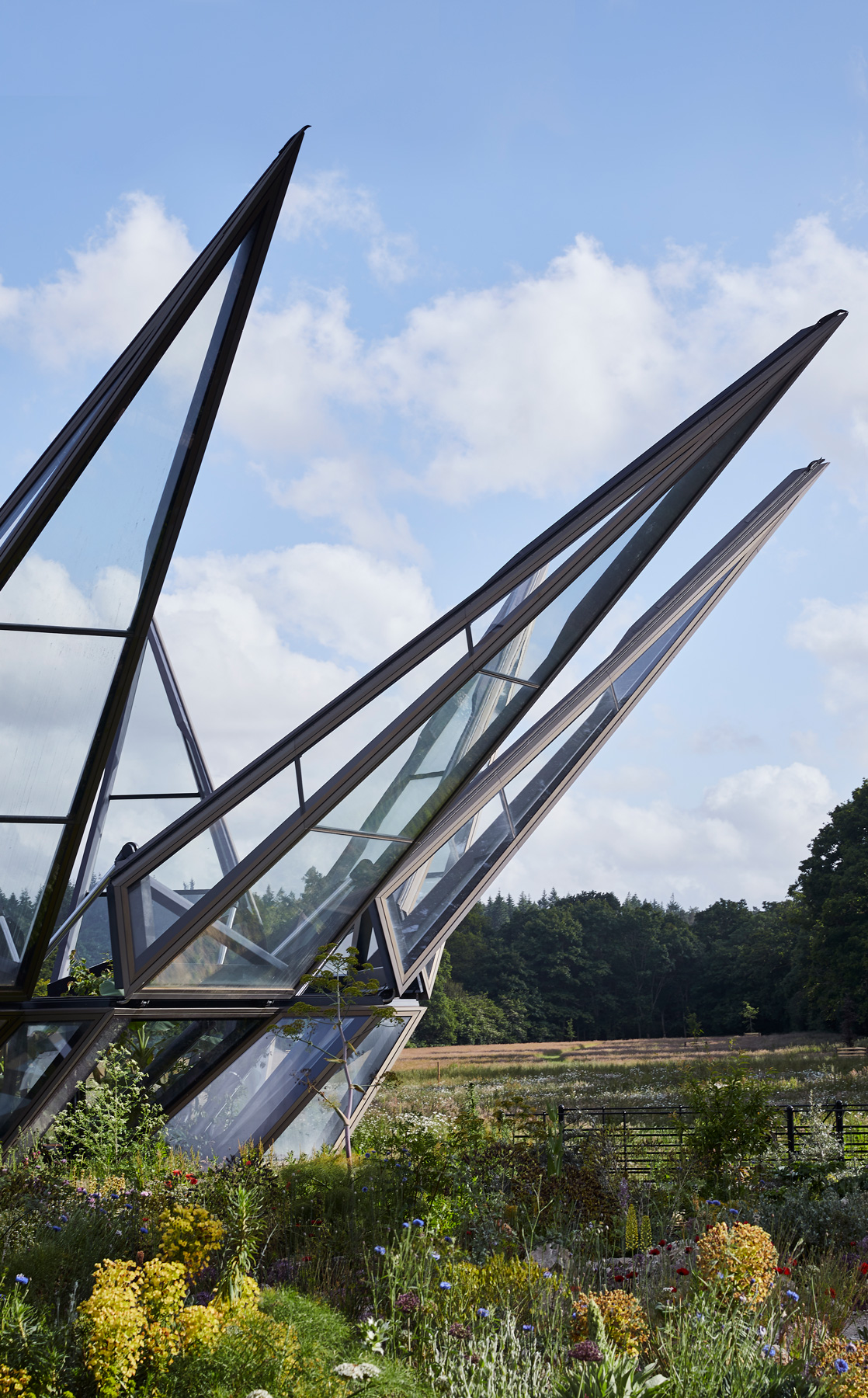

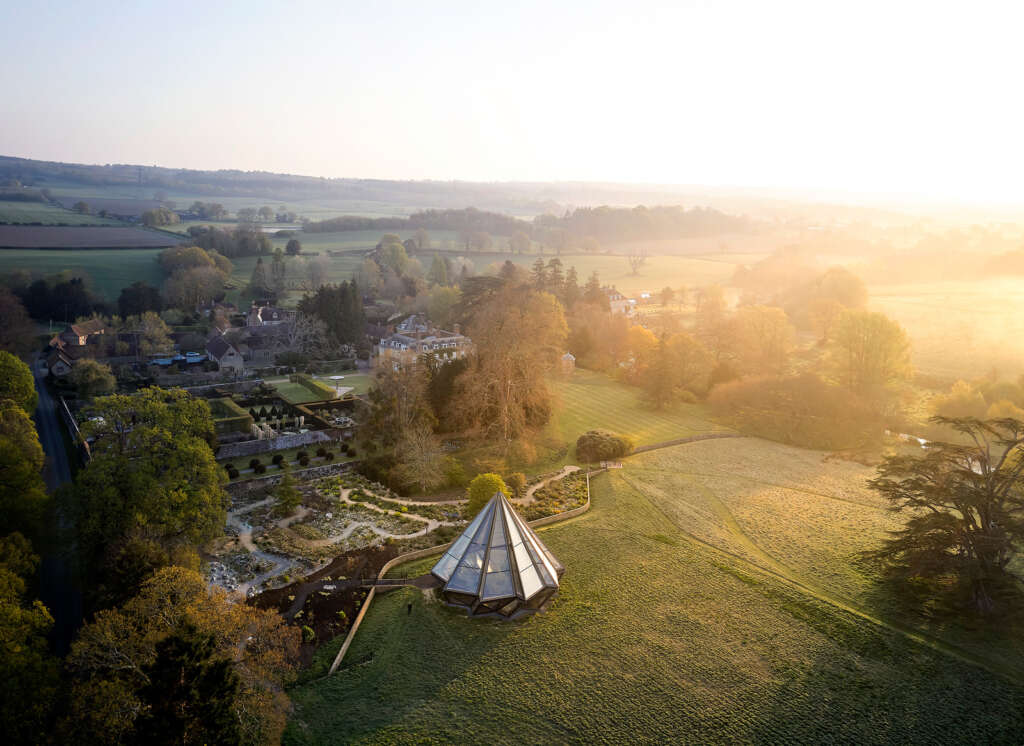
Designing the Glasshouse
When Heatherwick Studio was approached with the idea of completing the Silk Route with a functional and beautiful glasshouse, we didn’t turn to contemporary high-tech solutions.
Instead, we looked to the design of 19th century glasshouses and smaller scale decorative plant containers, such as Wardian Cases or Terrariums. These were once used by the Victorians to transport plants back to Europe, and then to display them. We were drawn to the quality of their engineering, their playfulness, attention-to-detail and the decorative elements. These cases were designed to be seen: objects in their own
right.
Over time, our design for the Woolbeding glasshouse emerged. Its jewel-like shape is radially symmetrical, like a large terrarium. Its pyramidal form echoes the pitched roofs of traditional structures in the landscape, while allowing enough height for the plants within to grow.
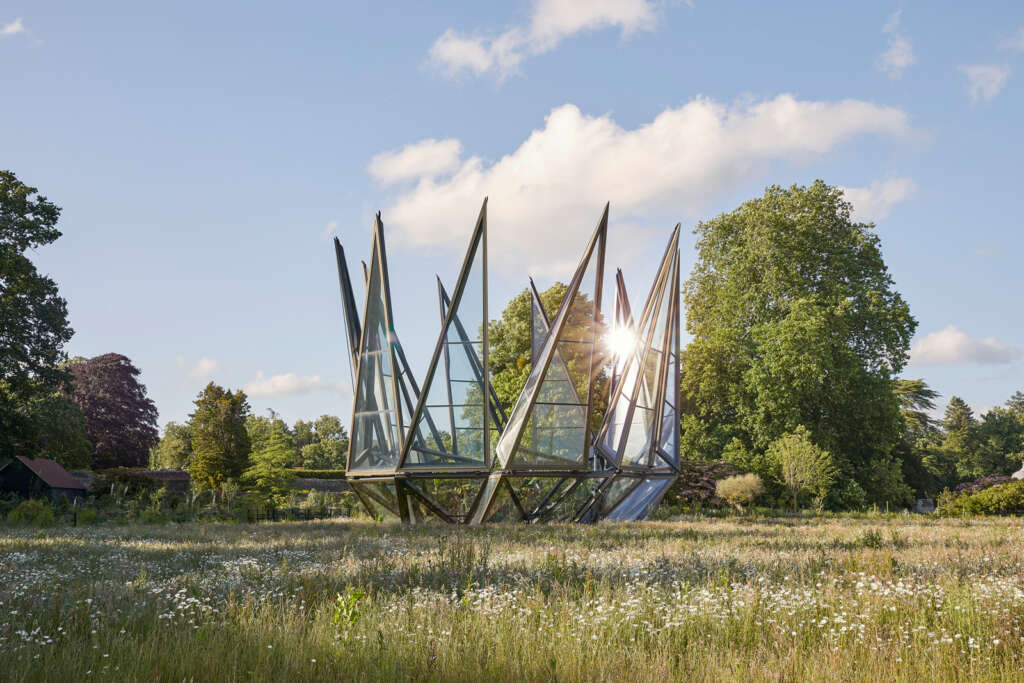
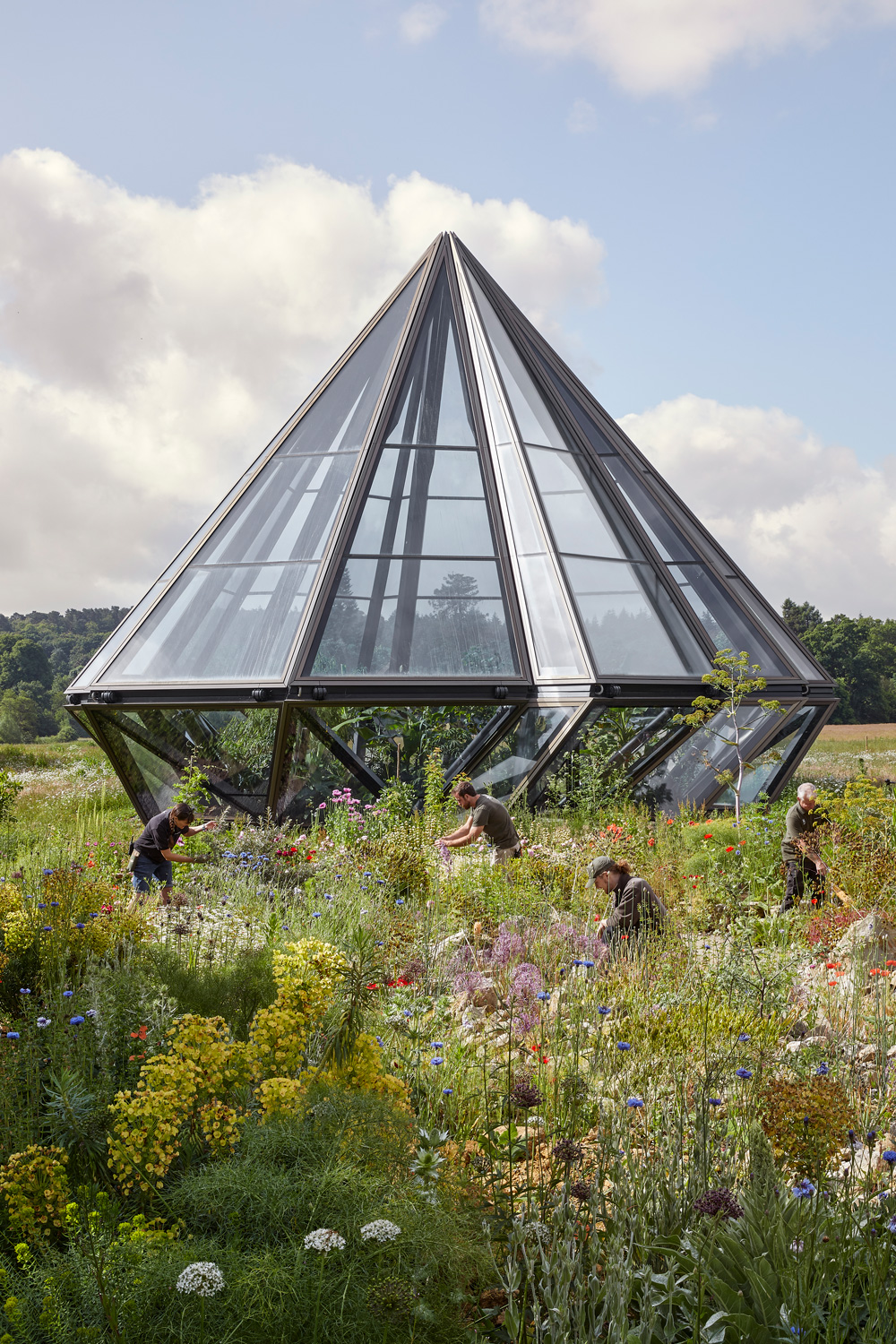
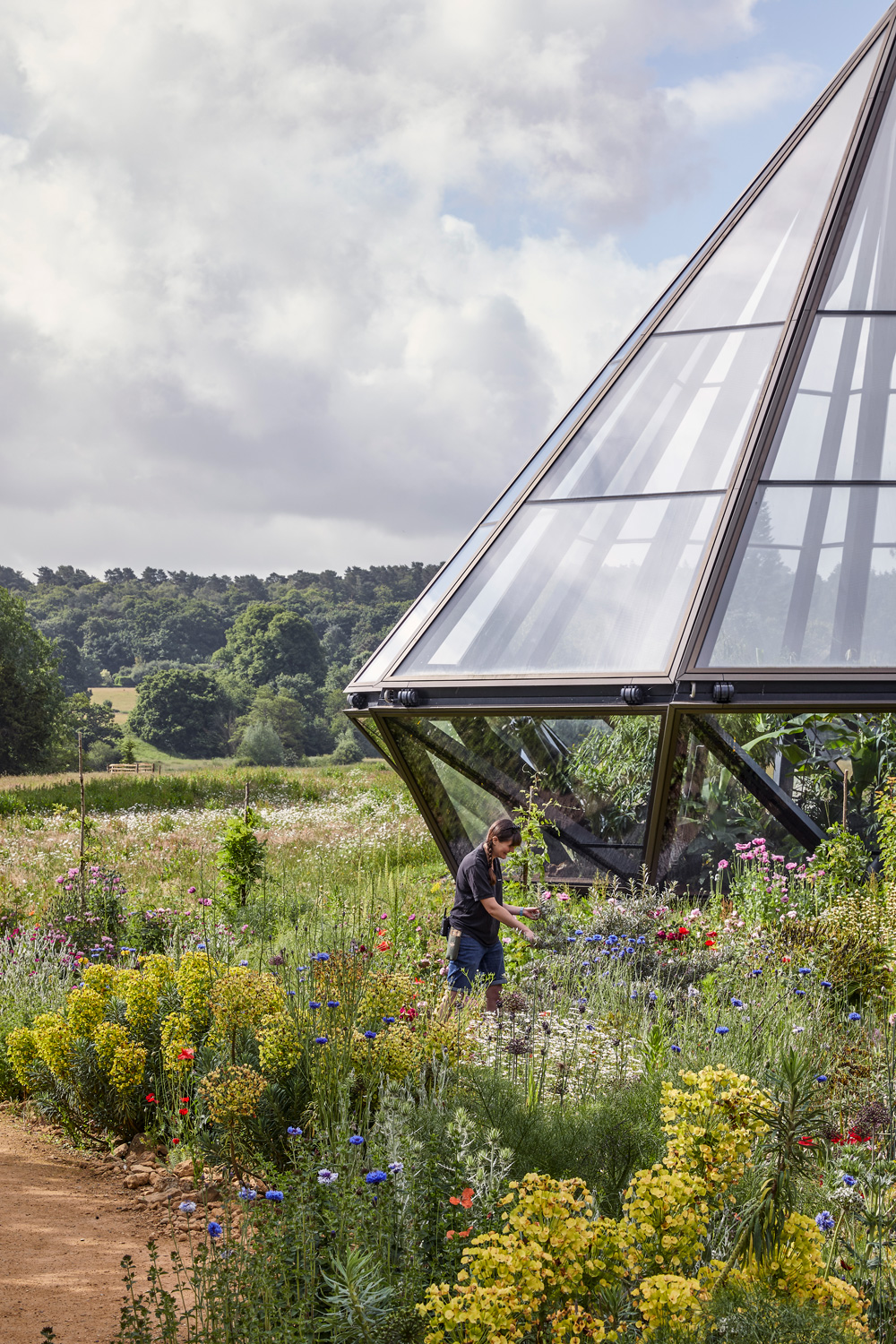
The completed structure is 15m high and covers an area of 143sqm. It sits in proportion to its context. Not too large to overpower the existing trees or the nearby Grade I listed church and its magnificent stained glass Saxon windows. Not too small to vanish within the pasture of flower-rich grassland it occupies.
On warm days, its ‘sepals’ (or petals) stretch outwards using a sophisticated hydraulic mechanism to open. The transformation – activated at the push of a button – is completed in four long minutes, during which time the forms shifts from a gem to a crown, or a flower that has opened to welcome in the sunlight.
This allows the plants access to sunshine and ventilation while providing an outdoor experience for visitors. Then in colder weather, the structure can remain closed to provide shelter and protection to its collection of plants and trees.
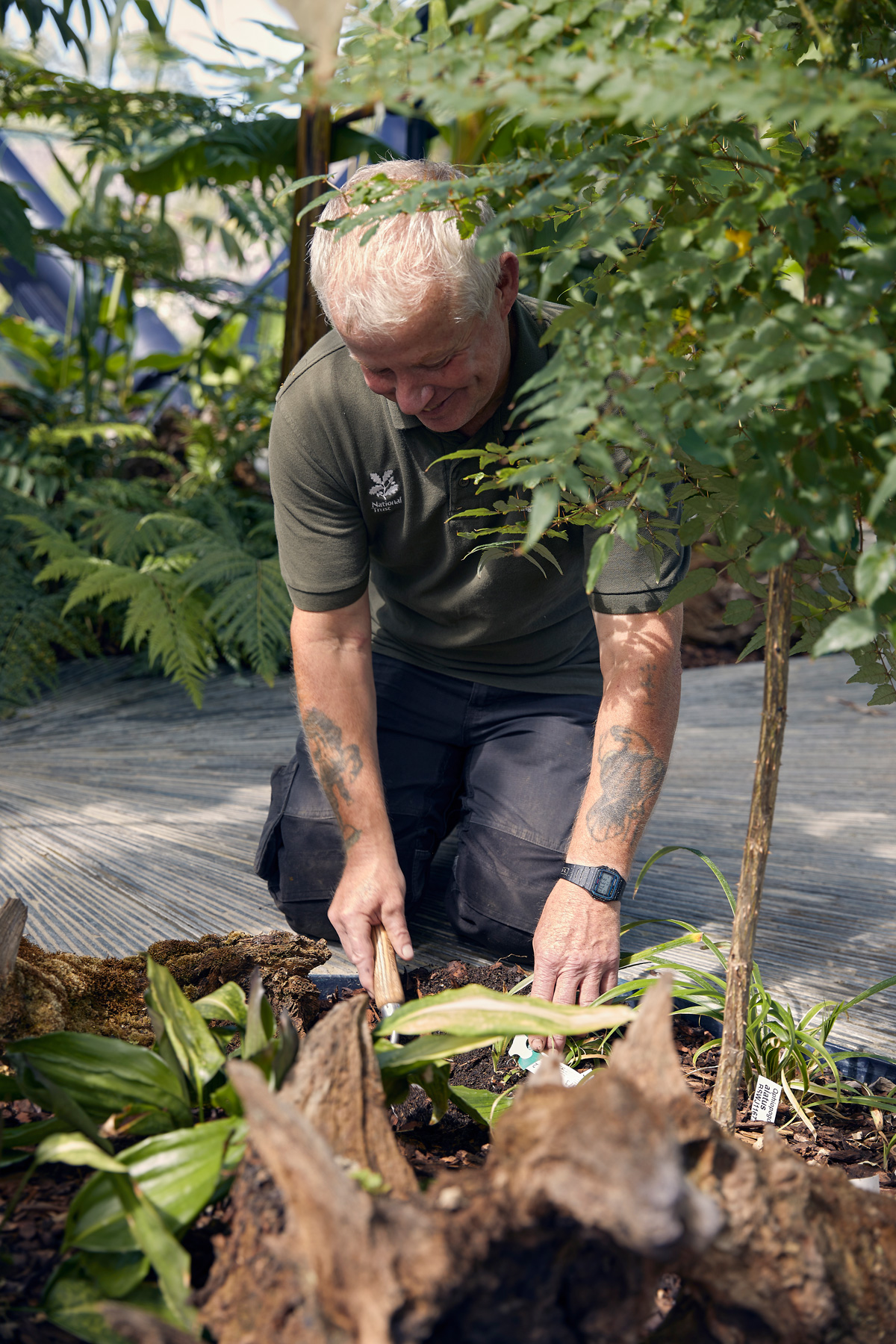
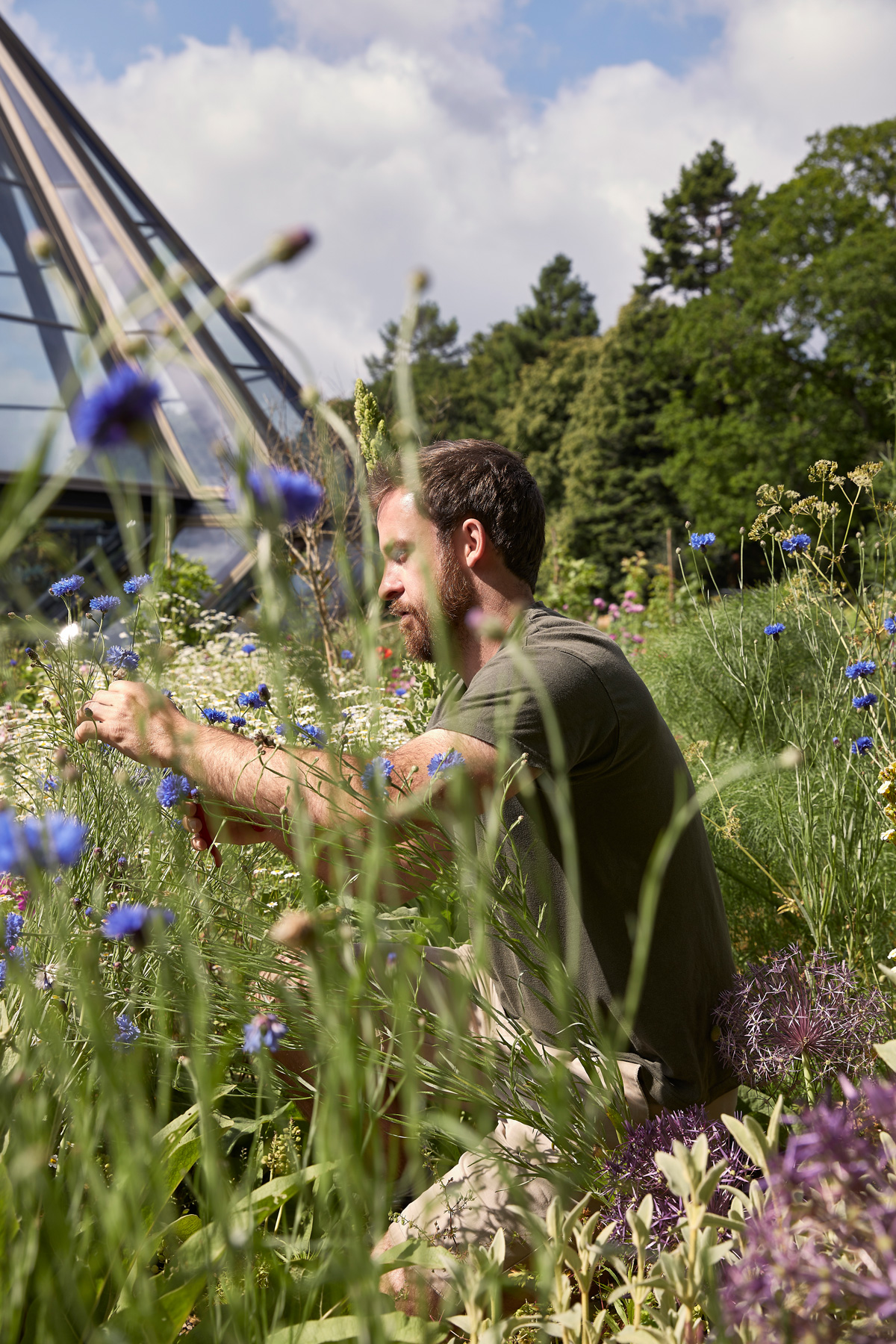
These moments of movement feel other-worldly. The act of shapeshifting is meditative. You experience a moment of togetherness.
But the greatest transformation is yet to come. That will occur over many years as the spectacular garden, tended by a team of passionate gardeners, continues to grow. A constantly evolving landscape designed to bring us delight and wonder.
Watch video of the kinetic Glasshouse in motion here
Project Details
- Project Name: Glasshouse for Woolbeding Gardens
- Location: Woolbeding Gardens, West Sussex
- Completion date: June 2022
- Gross floor area: 143m2
- Height of Glasshouse: 15m
- Outdoor Gardens: 2250m2
Designed by Heatherwick Studio
- Design Director: Thomas Heatherwick
- Group Leader: Mat Cash
- Project Leader: Stepan Martinovsky
- Technical Design Leader: Nick Ling
- Project Team: Peter Romvari, Skye Sun, Ross Gribben, Ning Loh
Project Team
- Client: The Woolbeding Charity
- Project Management: Stuart A Johnson Consulting Ltd
- Structural Engineers: Eckersley O’Callaghan Ltd
- Environment Engineer: Atelier Ten Ltd
- Building Services Engineer: Atelier Ten Ltd
- Habitat & Garden Design Consultant: Great Dixter Charitable Trust
- Landscape Architects: MRG Studio
- Cost Consultant: Core Five
- Moving Structures Specialist: Eadon Consulting Ltd
- Lighting Specialist: Light Bureau
- CDM: Goddard Consulting

